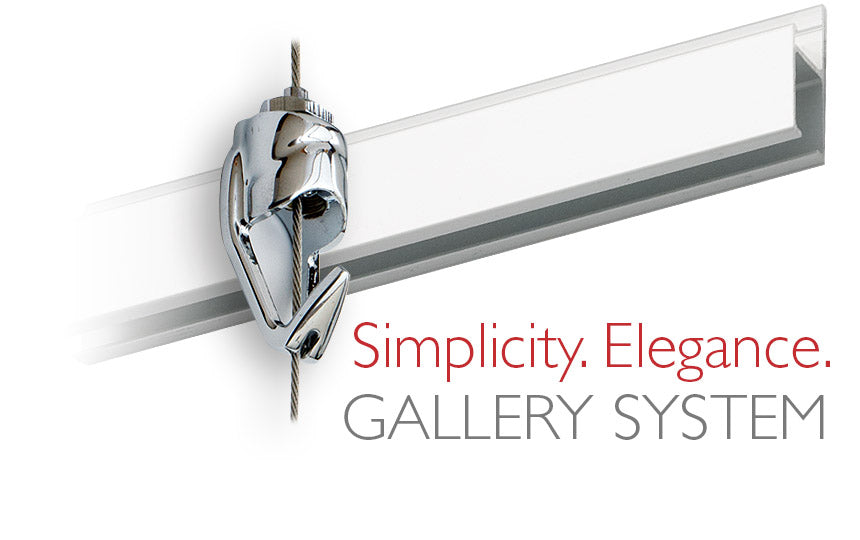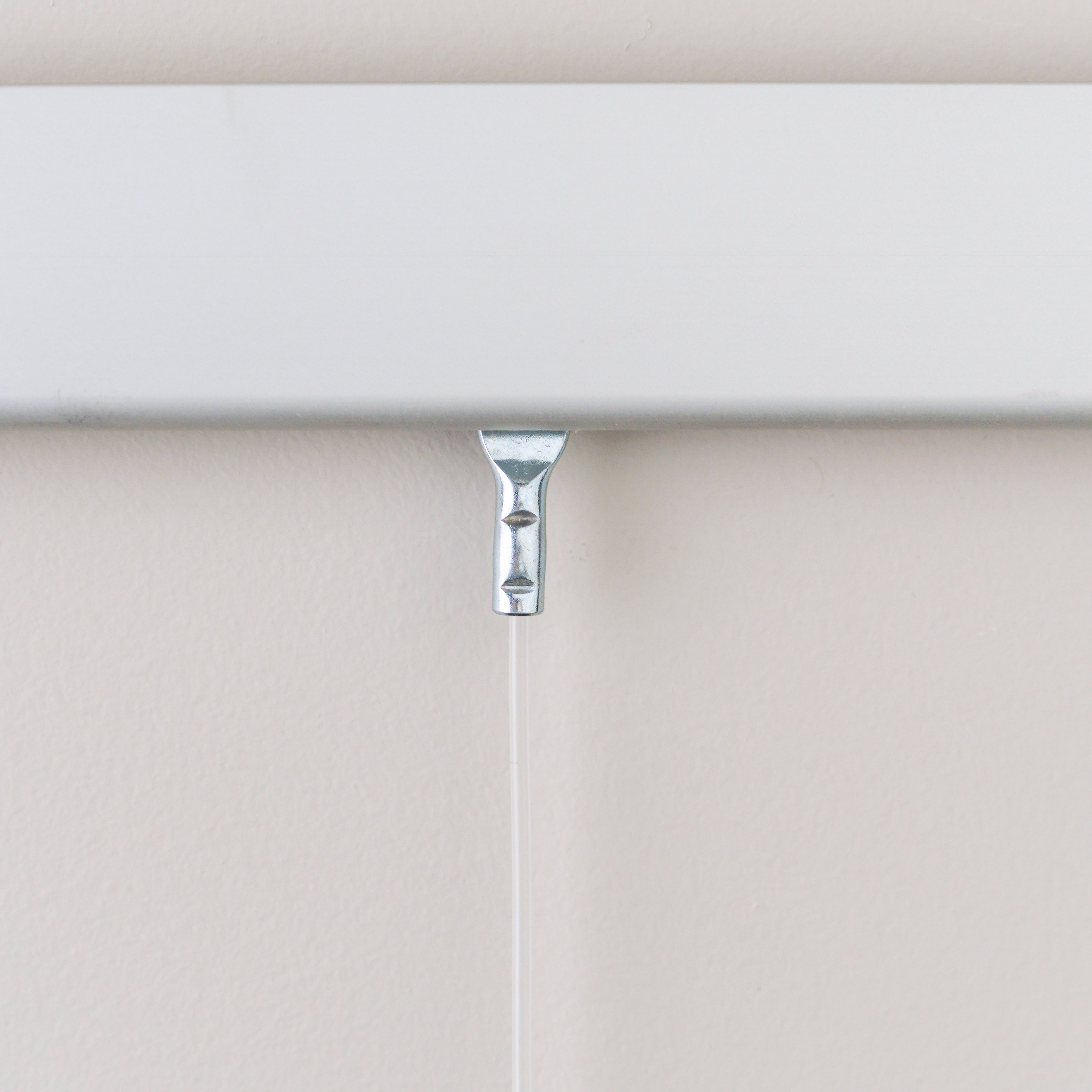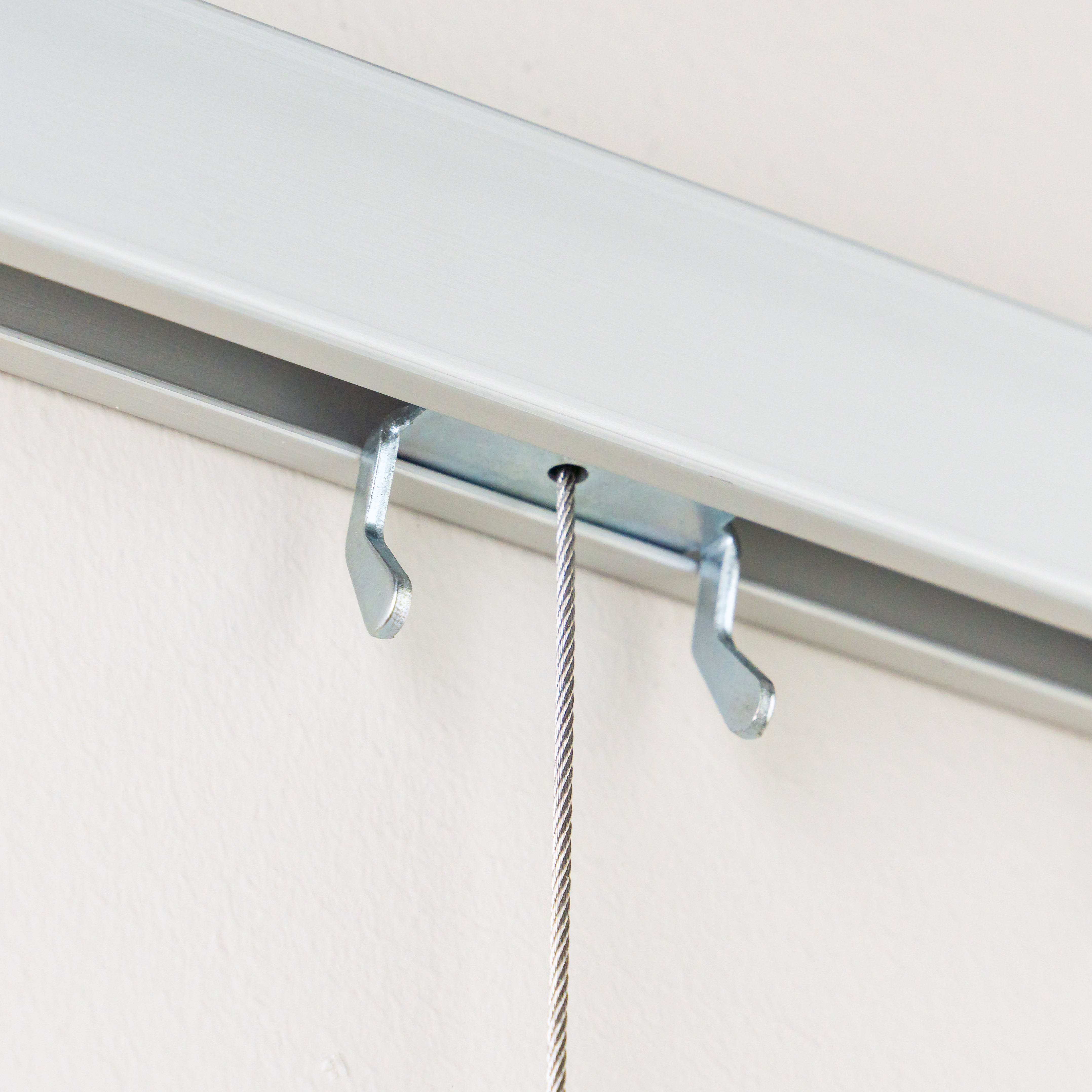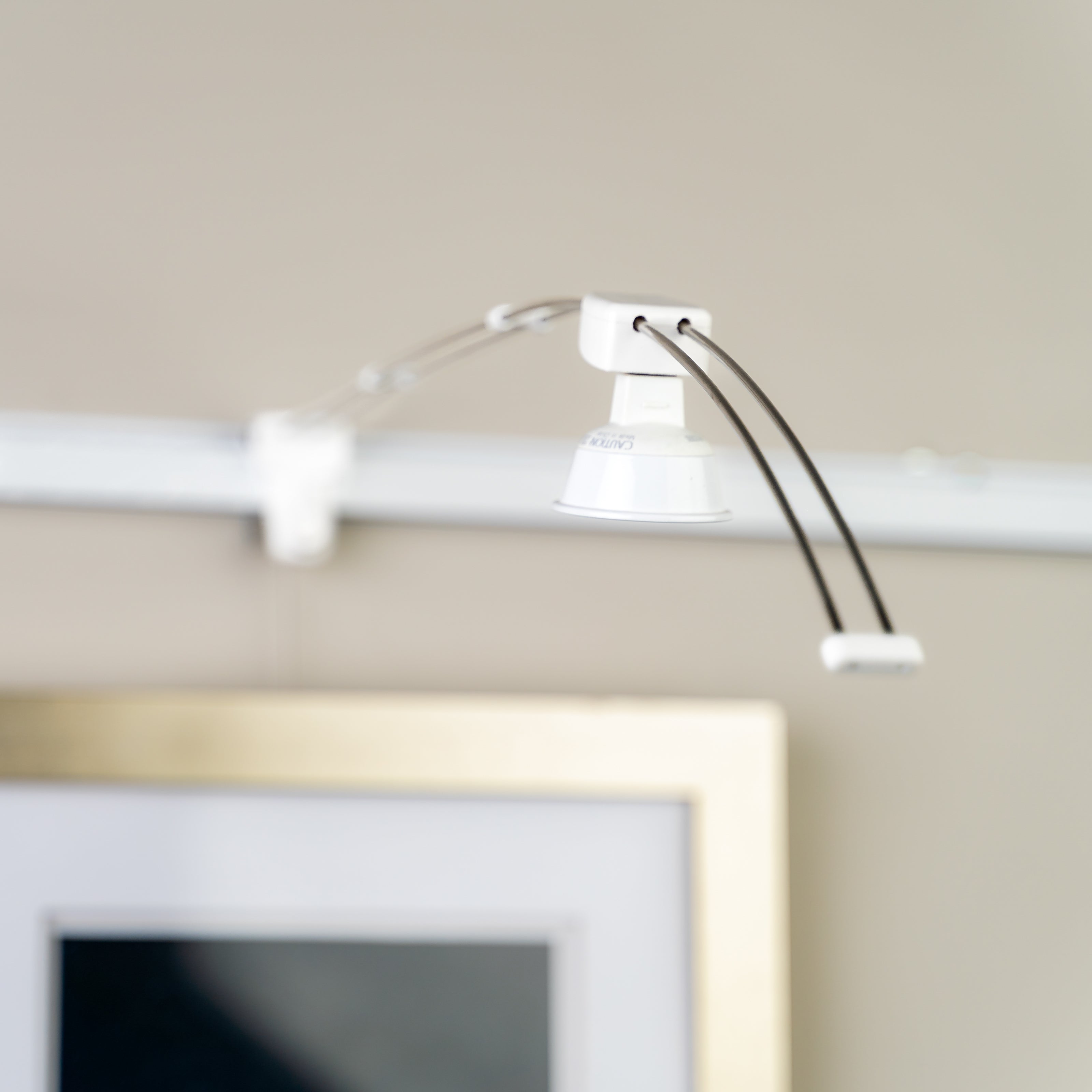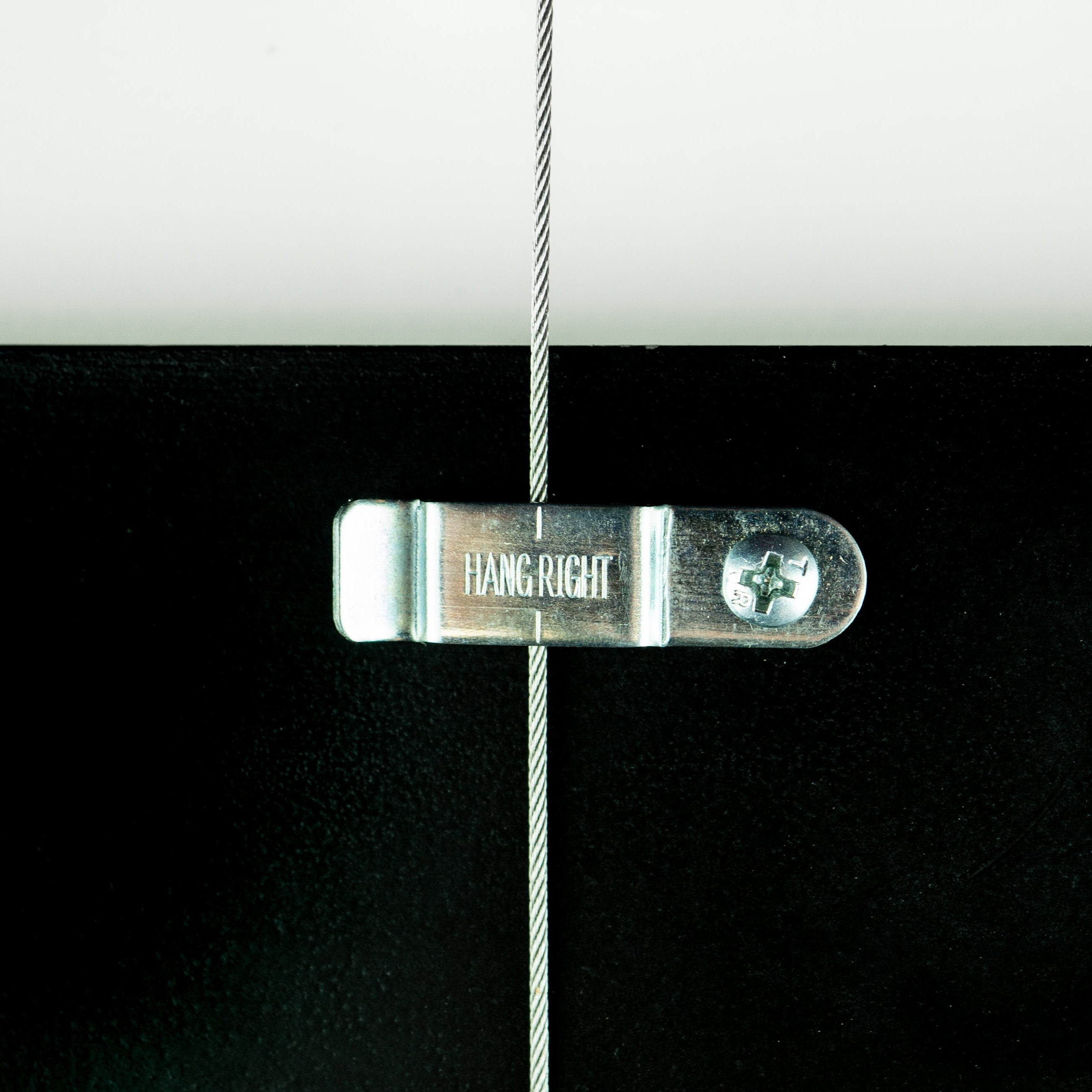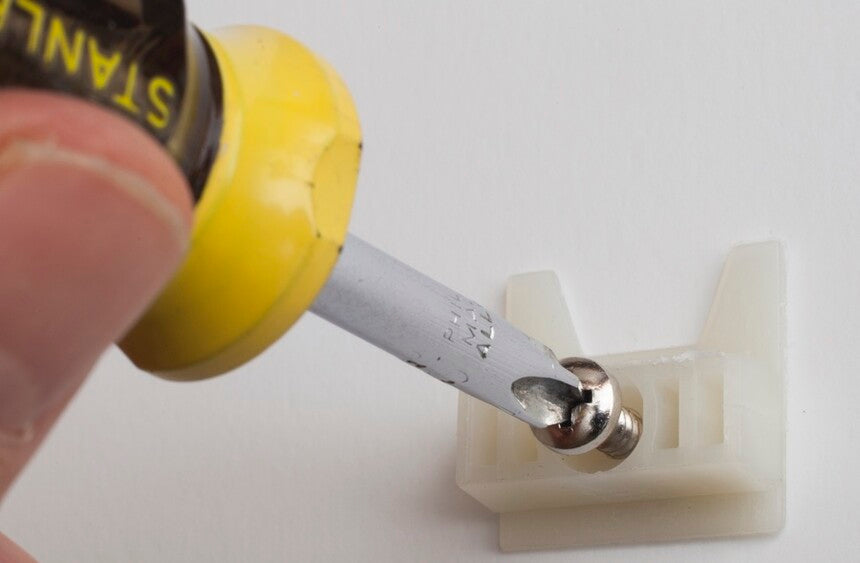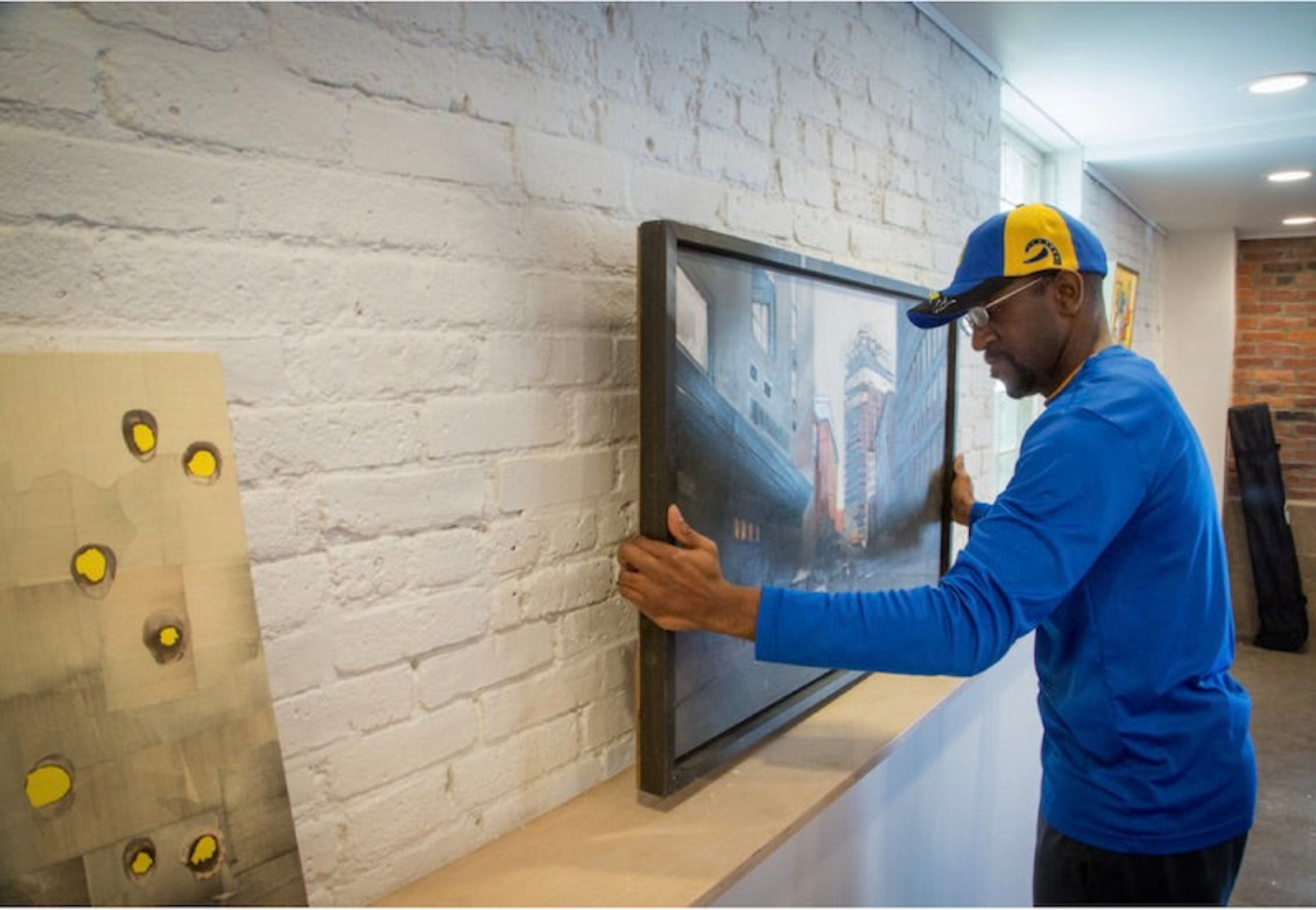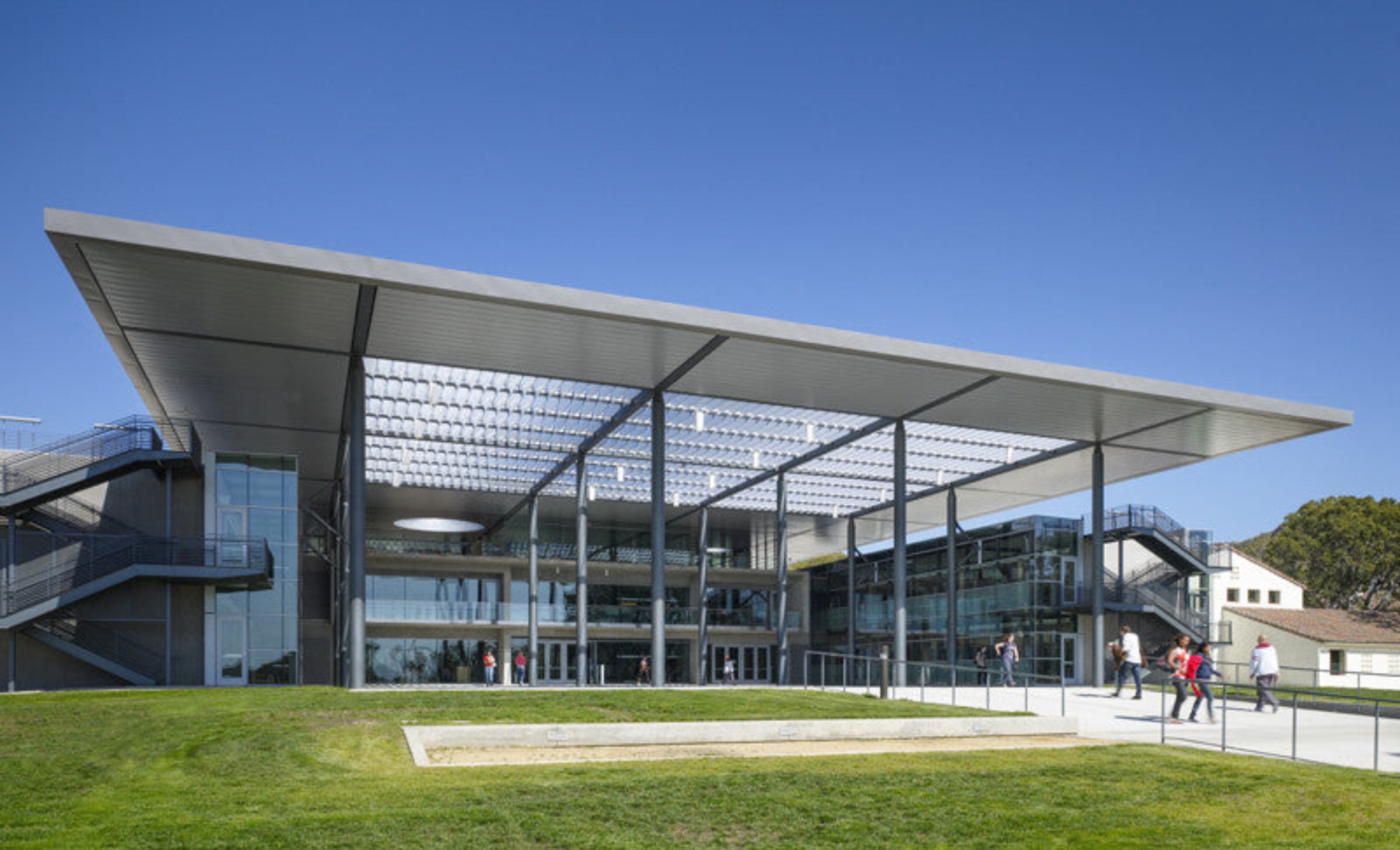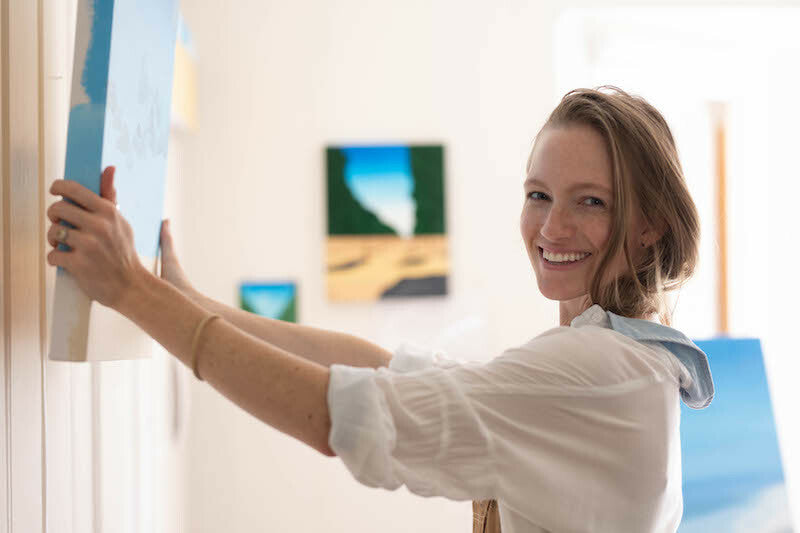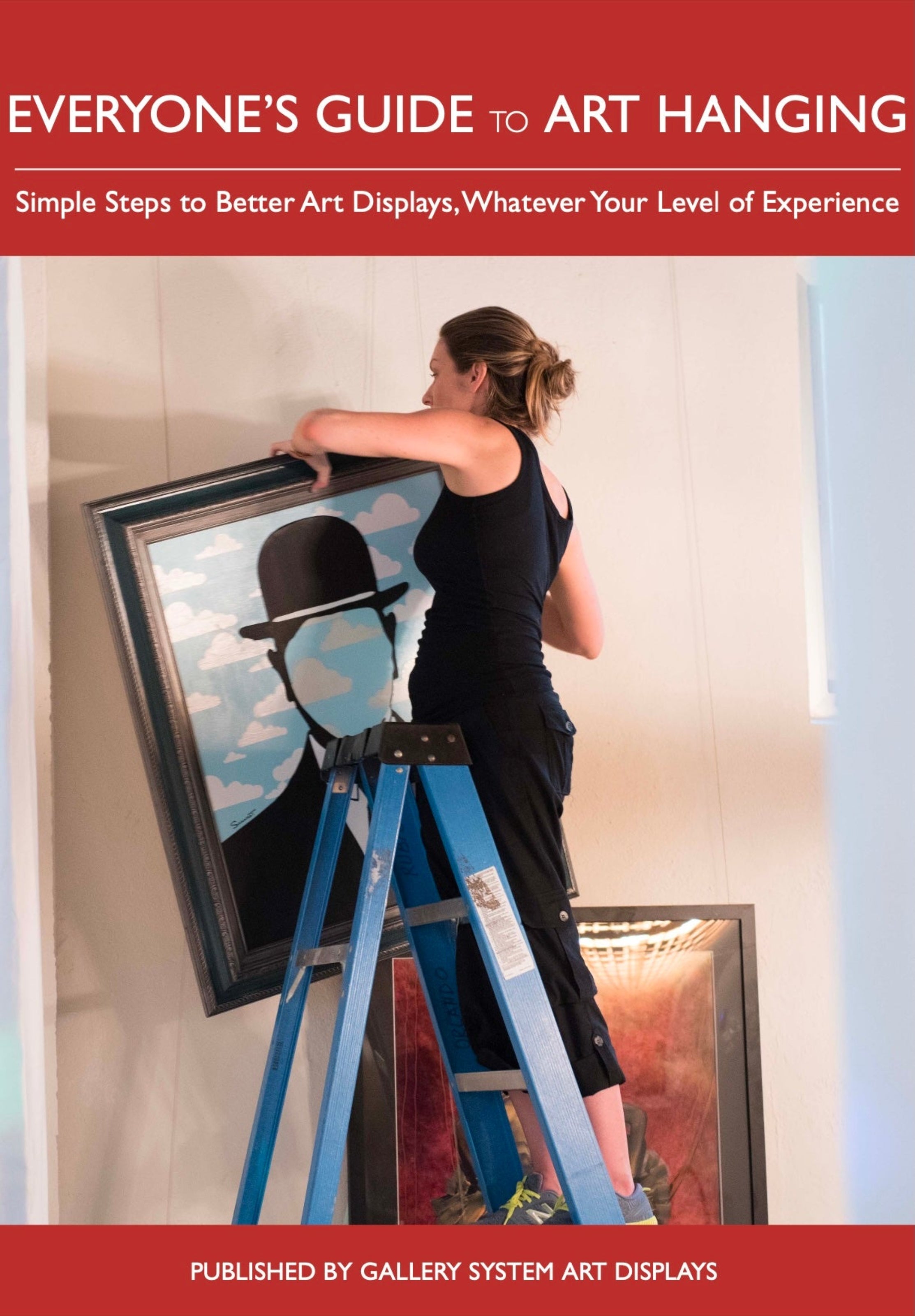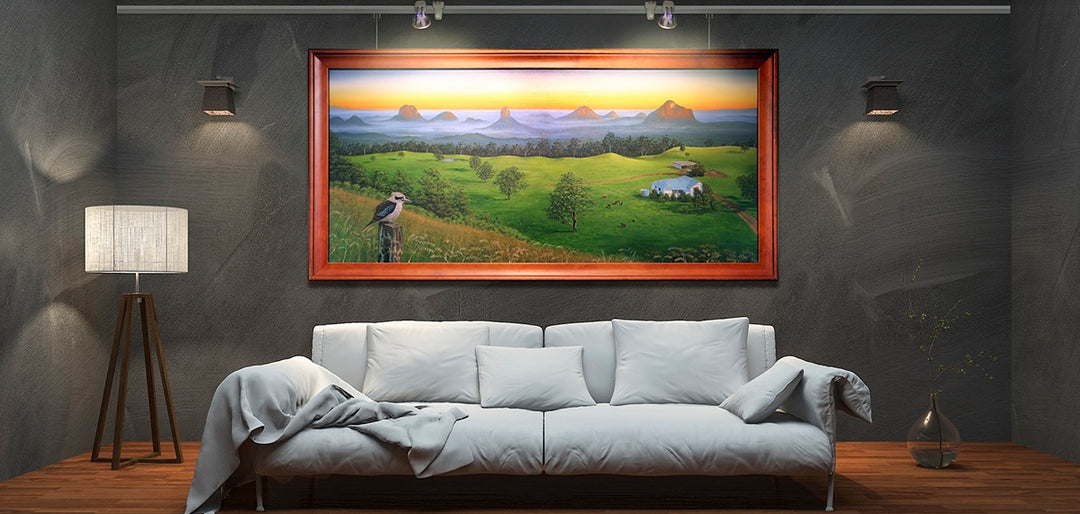Whether you’re hanging in a gallery, studio or home setting, art lighting is essential to ensure that viewers can really see and appreciate the works.
To see what a difference proper art gallery lighting can make, move the slider back and forth across the images below. They show the same framed photo in the same location; at left, the room’s ambient light provides all the illumination, while at right an art lighting system is in use.
Note how much more detail, depth, and color are revealed under lighting with neutral color temperature (3000 degrees K) and a high color rendering index.
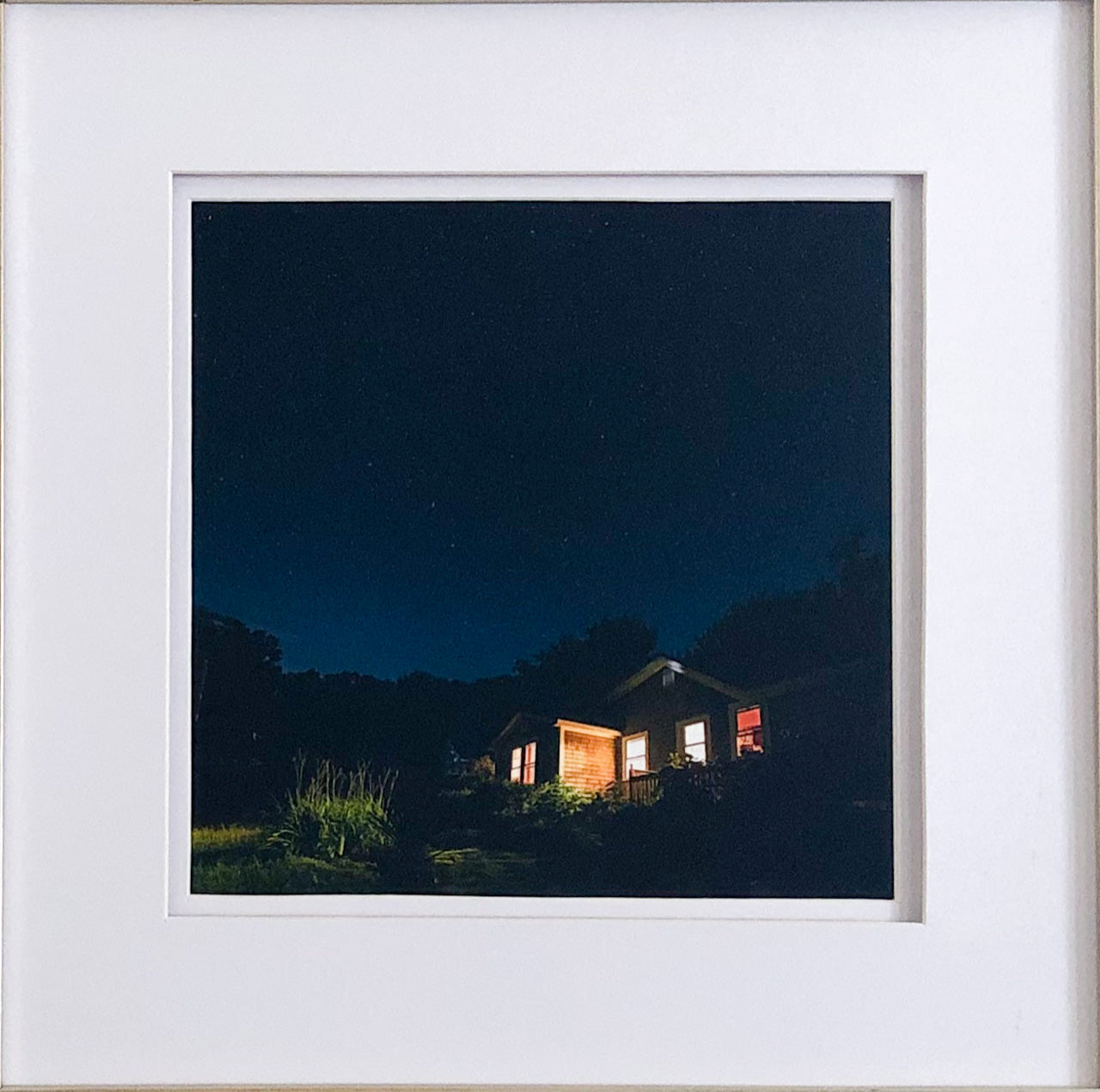
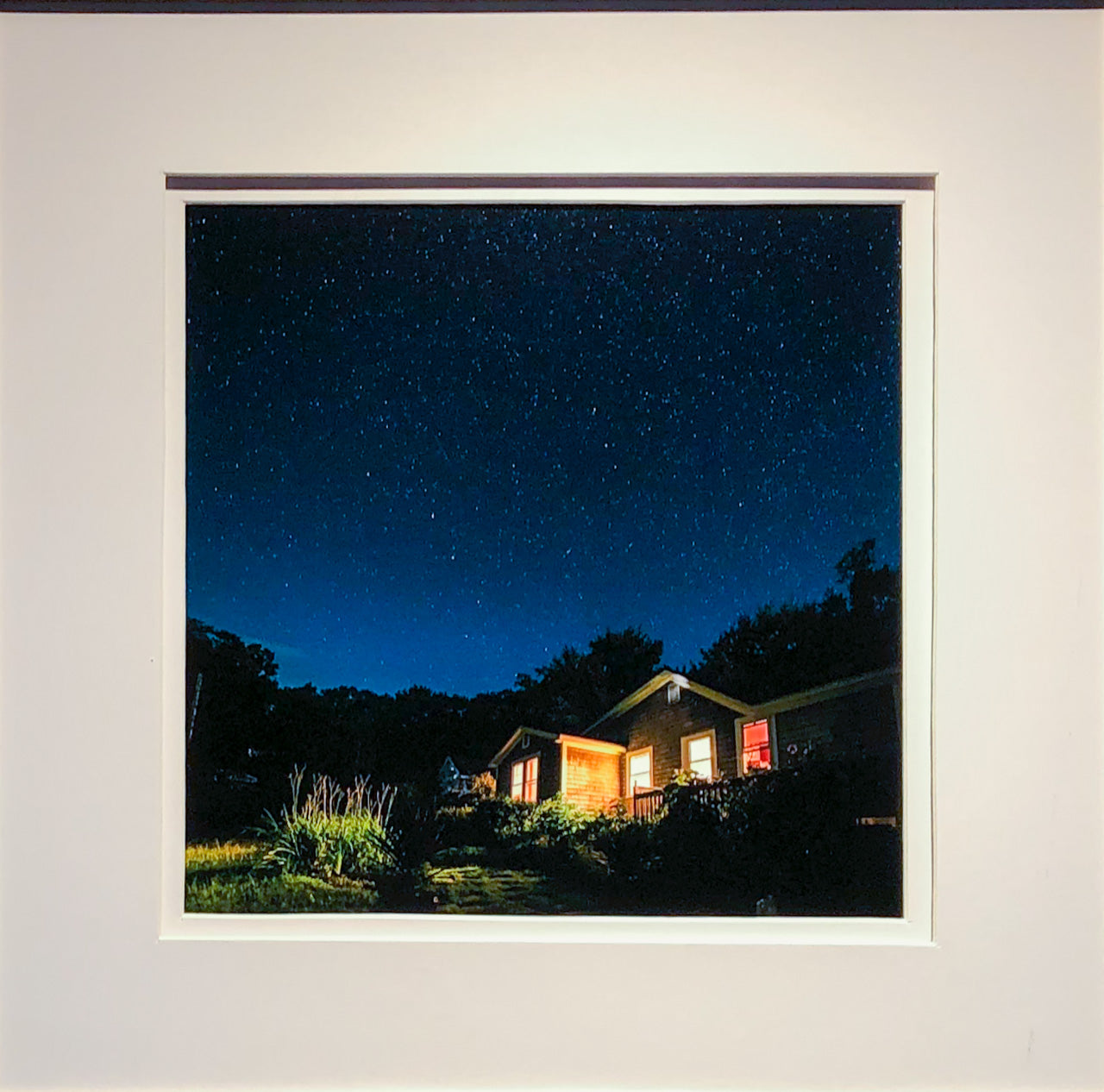
So, how can we choose fixtures and bulb types that can present our artworks to best effect?
This page covers the basic concepts of gallery lighting; if you'd like more detail on art lighting strategies for short-term and long-term display spaces, check out our Deeper Dive.
First, keep in mind that “best effect” is work-specific. Some pieces, especially those that are rich in fine and precise detail, look great under intense lighting that brings out every tiny element.
But impressionistic works that explore shadows and blur shapes might come across better with diffused illumination that creates a wash or generalized glow. As always, it’s best to experiment and see what works, keeping in mind the message that the art is seeking to convey.
Ideally the ambient lighting in your display space should be at least a bit lower than the light on the works, so brighter rooms will require brighter illumination of the displays. It’s best to remove any sources of harsh or glaring light; if there are windows to the outdoors, shades or blinds can give you a more controlled light environment.
Fixtures
If your space has on-ceiling track lighting, like the Art on Cairncross Gallery in the photo at right, fixtures can be moved and pivoted at will, and you can adjust light coverage, intensity and color temperature with different types of bulb (see below).
Recessed in-ceiling can-type fixtures offer a cleaner look and some flexibility with aiming and bulb choice, but you’ll have to plan your hanging locations around the can positions.
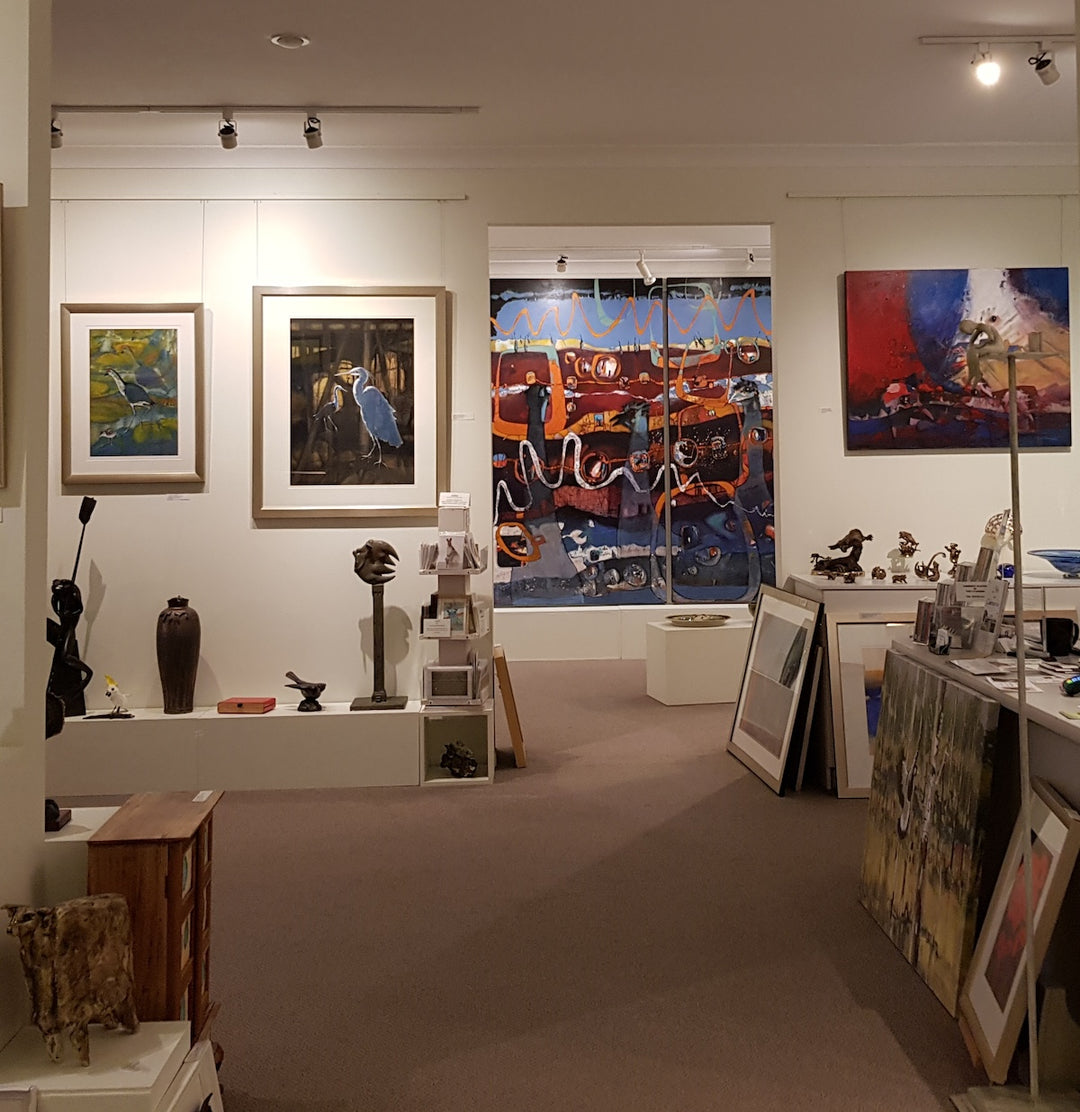
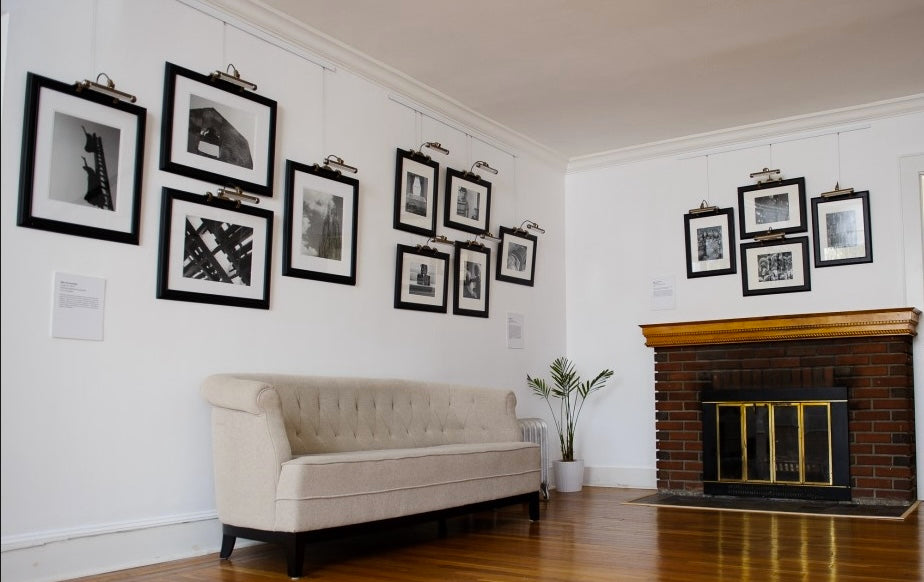
Picture Lights
Individual picture lights, as shown at left, can also be an effective and flexible approach. Traditionally the need for AC power required either visible cords or in-wall wiring, but the advent of LED bulbs has made battery-powered picture lights a feasible and wire-free option, especially in smaller spaces that do not have to operate for many hours. (Thanks to photographer and author Ananda Lima for sharing these images of her open studio exhibition.)
Integrated Lighting
Another approach, which combines the benefits of track lighting and picture lights, is the integrated lighting option available with Gallery System’s Original Gallery System, as seen at right.
Gallery owner and artist Teyjah McAren creates works that evoke ancient sites with deep, warm earthy colors; for them she wanted “an overall glow around the paintings, and not hot spots of light...spacing the light wands equidistantly across the display area and making small adjustments...helps create more of a radius than a spot."
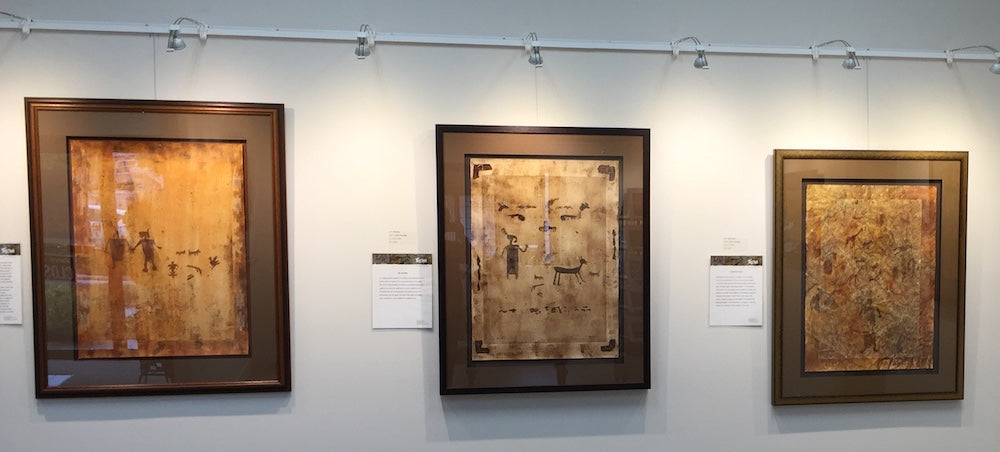
With any fixtures, pay attention to the angle at which the light hits the work being illuminated – if the light source is too close to the wall, you’re apt to get shadows, while if it’s too far out the light can create glare on the surface of the work. And of course, you want to illuminate the entire work, with no dark corners.
Choose the Right Bulbs
Whatever hardware you use, selecting the right light bulb is important for both aesthetics and preservation of the works, which can be damaged by ultraviolet (UV) light or heat.
While halogen bulbs were once the traditional standard for art display, they have been displaced by LEDs, which offer much longer life, far higher energy efficiency, and cooler operation, with newer versions providing excellent illumination quality. Halogen bulbs should no longer be used for art display as the special art-safe versions (which featured shielding to filter out the UV wavelengths they produce) have largely been discontinued by manufacturers.
Avoid fluorescent bulbs, which generate UV and tend to distort colors.
A bulb’s color temperature has a major impact on how your works will look. Lower temperature ratings (under 3000 degrees Kelvin) produce warmer light, higher ones cooler light. Temperatures right around that 3000 degree dividing line provide a neutral effect, but you may wish to evaluate several options to see what looks best on your specific display. Ideally, standardize on one type and buy some spares, to avoid distracting your viewers with different-color beams.
Color rendering index (CRI), which measures how accurately colors appear under the light, is also an important consideration. To ensure that an artist's color choices come across properly, aim for a CRI of 90 or above.
Also, note that reflector-type bulbs (such as PAR and MR16 types) come in a range of beam shapes – from as narrow as 10 degrees to 50 degrees or more. This can be useful in matching the size and shape of works on display to the position of available light fixtures. Use a narrow beam if you have a small piece that’s relatively far from the light source, or a wide beam for a larger, closer piece.
Have questions about lighting art displays? The Gallery System customer service team is glad to help – call us at 1-800-460-8703 for personal assistance, or use our Contact Form.
A version of this article originally appeared on the DontTakePictures.com blog


